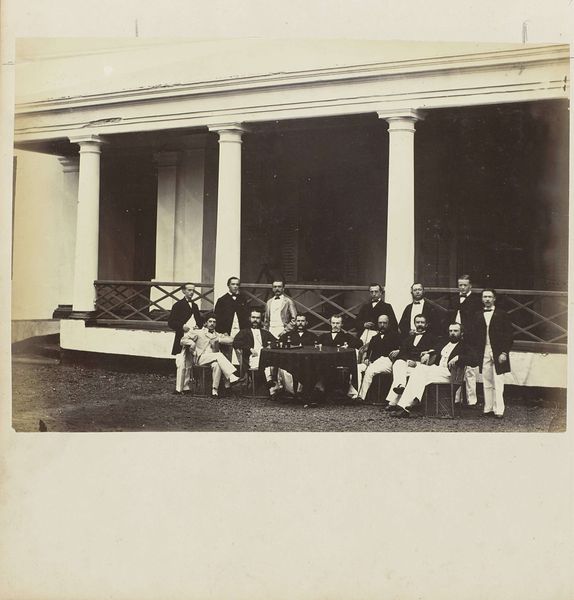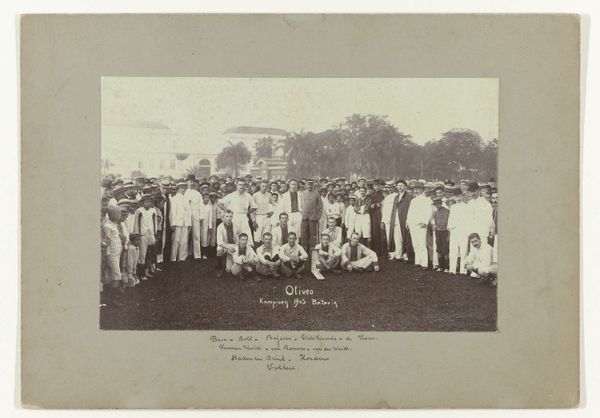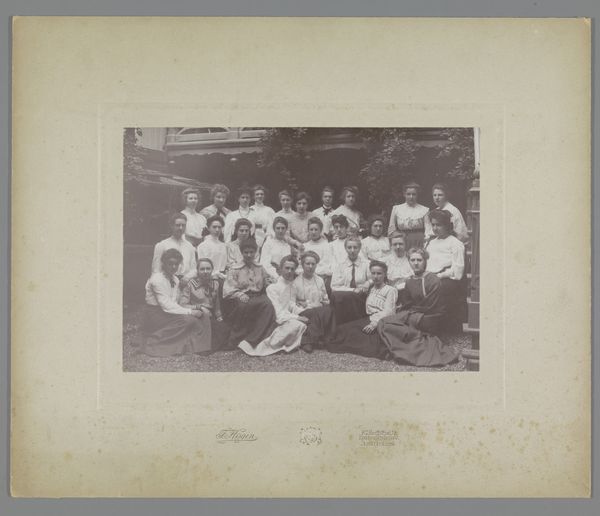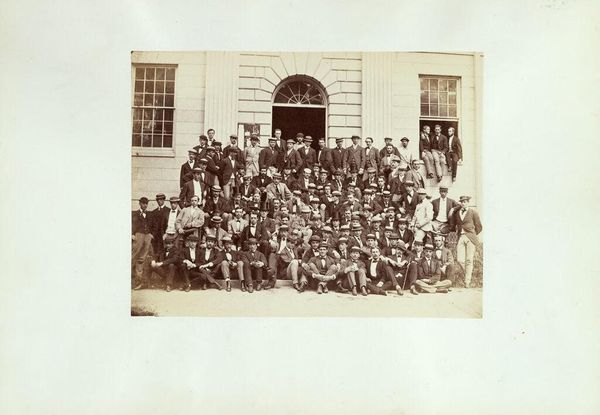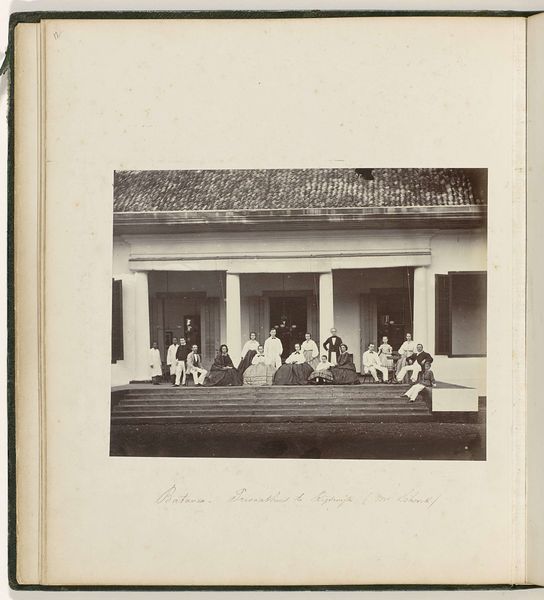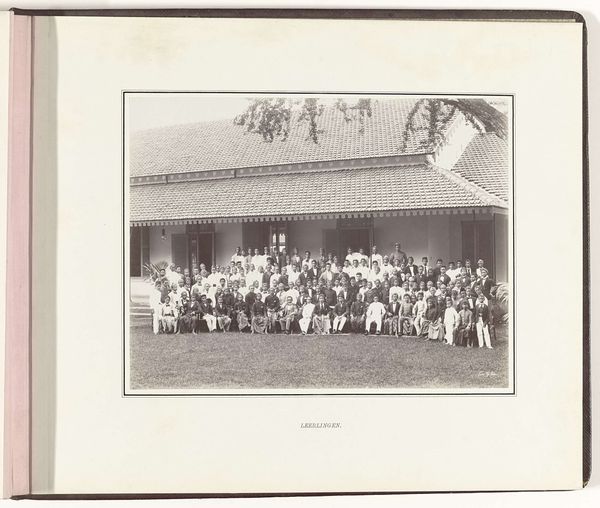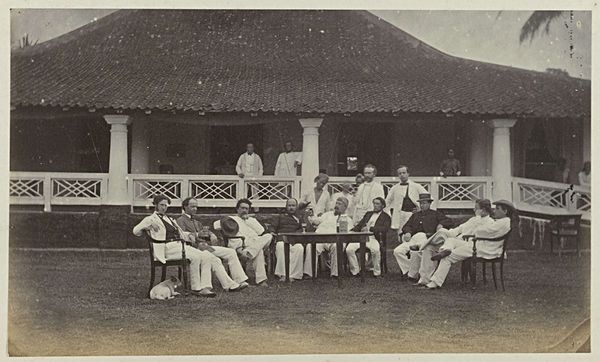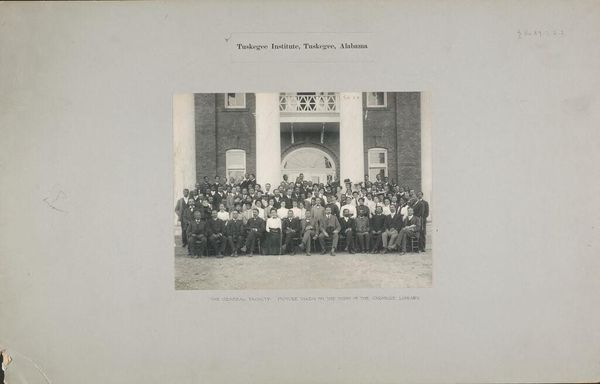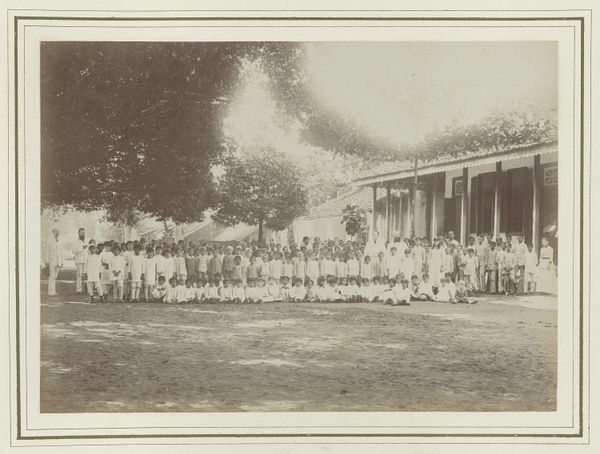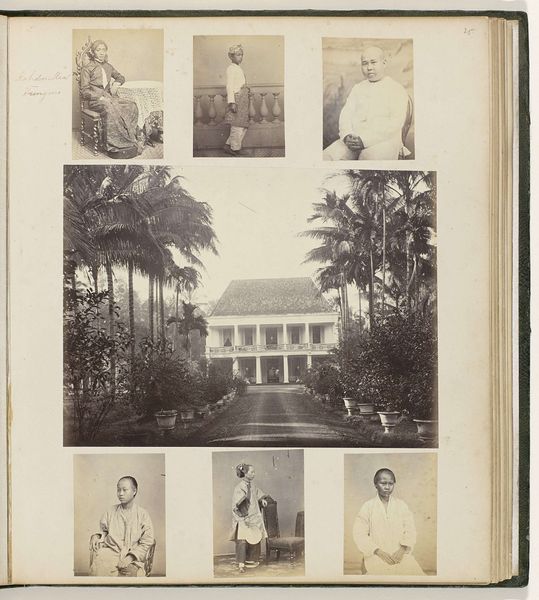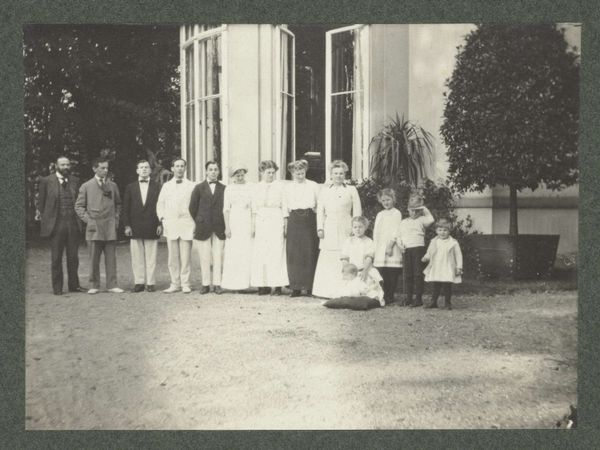
photography
#
portrait
#
16_19th-century
#
photography
#
group-portraits
Dimensions: height 183 mm, width 233 mm
Copyright: Rijks Museum: Open Domain
Curator: This albumen print, dating from 1863 to 1866, presents a group portrait of men posed outdoors. The image, aptly titled "Groepsfoto," comes to us from Woodbury & Page and is part of the Rijksmuseum collection. Editor: Well, the first thing that strikes me is the weightiness of it all. Everyone seems so...contained. It's like they're posing for eternity. The lack of spontaneity makes me feel a bit melancholic, as though their future is uncertain. Curator: That controlled atmosphere is definitely part of the era's aesthetic and social conventions regarding formal portraiture. During this time, group photos were often commissioned to showcase power, unity, and the supposed achievements of a particular collective, which, as we see here, typically excluded women. This setting seems possibly colonial in nature, looking at the architectural setting, prompting further questions of power dynamics in such communities. Editor: Yes, the architecture reinforces this seriousness! Though their matching white clothing looks almost celebratory. But I'm curious—what would it have felt like for them to sit still for such a long exposure? Curator: Indeed! This speaks to the sitter's endurance as well as the labour involved for those operating behind the camera. Each aspect reveals power and patience. This leads us to explore the role of photography as a colonial tool to document, classify and control both landscape and peoples. Editor: Absolutely, but from a purely aesthetic point of view, there is beauty to be found here! Despite all those stiff faces. The way their forms cast such long shadows against such light colors! It tells a visual story, even when they are trying to mask their personality for a group setting. Curator: I agree; light and shadow bring an intriguing quality and add a unique element. Editor: Thinking about it now, the photograph as a document reveals and obscures. They may be hiding behind their posture and composure, but it betrays something. Thanks for giving it much needed socio-historical context to it. Curator: You're most welcome!
Comments
No comments
Be the first to comment and join the conversation on the ultimate creative platform.
